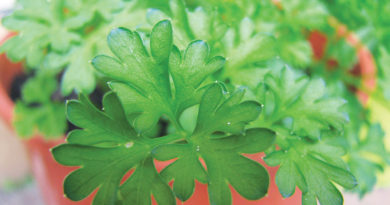10 Neat Things About Poppies
As we get ready for the somber day of November 11 with a poppy in our lapels, we turn to the many fascinating facts about this tough but ephemeral little plant. Did you know that it has been cultivated for millennia, owing to the edible seeds and the morphine within? That they are easy to grow and drought tolerant but can leave a bare spot in the garden? And were you aware that there are a couple of species of Papaver that originate from right here in Canada?
Read 10 neat things about poppies here.
1. Symbol of remembrance and resilience.
Poppies are widely recognized as a symbol of remembrance for soldiers who have died in war, particularly through John McCrae’s poignant poem, “In Flanders Fields.” Additionally, the corn poppy, also known as the Shirley poppy (Papaver rhoeas) thrives in disturbed soils, which is why it was among the first plants to bloom on the scarred battlefields of World War I, symbolizing both memory and the resilience of life.

2. Culinary delight but be careful.
Poppy seeds from the opium poppy (Papaver somniferum) are a popular ingredient in baking and cooking, adding a nutty flavor and crunchy texture to breads, cakes, and pastries. However, consuming products with poppy seeds can sometimes lead to a positive result on drug tests for opiates, owing to trace amounts of morphine present in the seeds.

3. Morphine?
Don’t worry, you won’t get any kind of high from eating poppy seeds. Morphine comes from the sap in the plants. Opium makers score the seed pod of somniferum, allowing the milky sap to ooze. Once it has darkened and oxidized, they collect it and process it into morphine.

4. Easy to grow.
Poppies are exceedingly easy to grow from seed and can thrive in poor soil, making them great for novice gardeners or those with challenging garden conditions. They are not just beautiful to look at; they also attract pollinators like bees, butterflies and birds, adding life and motion to the garden. While individual poppy flowers may only last a few days, their striking appearance and multitude of blooms ensure they make a lasting impact in the garden.

5. Drought tolerant.
Many poppy species are remarkably drought-tolerant, making them ideal for xeriscaping or low-water gardens. Their ability to thrive in dry conditions helps gardeners reduce water usage while still enjoying vibrant blooms. They have been cultivated from ages past on marginal lands where other crops might fail. Their ability to withstand drought conditions made them a reliable source of food and medicine.

6. Problem with poppies.
Some poppies, especially Orientals, can be problematic for gardeners because, like traditional bleeding hearts and tulips, the foliage dies back after blooming, leaving you with a gap. Common solutions are to plant annuals around the poppies to hide the gap, to plant ground covers in the area that continue to look lush when the poppies disappear, or to stick a container in the area.

7. What’s in the name?
The origin of the name Papaver is uncertain. It is probably related to the word for milk (pappa in Latin) referring to the milky latex sap that oozes from the plant when cut. Pappa comes from pappare, meaning “to eat”, another possible connection to the edibility of the seeds.

8. Floral symbolism.
In floral language, poppies represent a variety of emotions and messages. Red poppies are most commonly associated with remembrance and consolation, while white poppies symbolize peace, and yellow poppies stand for wealth and success.

9. Not all poppies are poppies.
Many plants we call poppies are different from the poppies belonging to the Papaver genus. These include the California poppy (Eschscholzia californica), which dazzles with its bright orange blooms, and the blue Himalayan poppy (Meconopsis), known for its striking blue flowers. These at least look like poppies. Others from a different genus that we call poppies don’t look like anything from Papaver, like the celandine poppy (Stylophorum diphyllum) and the plume poppy (Macleaya cordata).

10. Native poppies.
Poppies are native and non-native to Canada. Iceland poppy ( nudicaule) is native to the subpolar boreal regions, including this great country. Another is the Arctic poppy, P. radicatum, with its a delightful small yellow flower; it was found to be the northernmost flowering plant in the world in 2023. South of the 49th parallel, there is a California poppy (P. californicum) which is different from Eschscholzia californicum.









